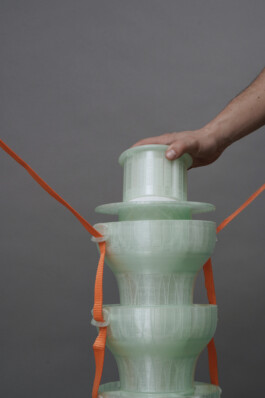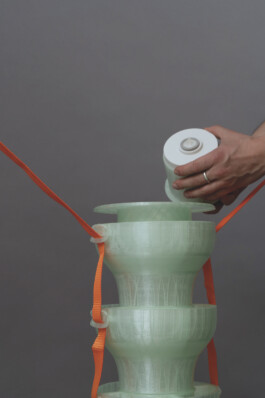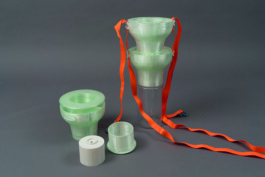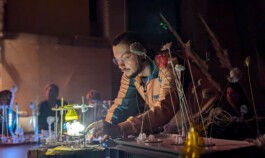FUNGINSECT, 2024
Due to climate change and lack of biodiversity in our forests they are weakened and suscetible to parasites like the bark beetle. But astonishingly the beetle works together with a fungus partner that allows it to specifically track down weakened trees.
The "Cordyceps" on the other hand is a sought after & vital fungus, which grows naturally on insect larvae and thus contributes to a balance in the ecosystem.
The FUNGINSECT project combines the properties of these two fungi. The symbiotic fungus lures the bark beetles into the trap housed in a capsule in the lid of the prototype and the vital fungus decomposes the bark beetles.
The aim is to regulate a regional overpopulation of the bark beetle
and simultaneously cultivating Cordyceps for medical purposes

The role of the bark beetle in the forest ecosystem is a broad and complex field. It is often assumed that the main cause of mass tree mortality is the insect itself. On closer inspection, however, the picture is somewhat different. There are various factors that put additional pressure on the forest and help the beetle to reproduce. First and foremost is climate change, which is causing prolonged periods of heat. Due to the prolonged heat, there is a higher number of generation changes in the beetles and less heat-resistant plants dry out.
Another point that has so far been underestimated is the influence of fungi on the well-being of trees. Many cultures live within the tree organism and extract nutrients from the trees, recognisable by the so-called blue rot that appears on the wood.
In spruce trees, one of the most affected tree species, it has been found that a similar fungus forms a symbiosis with the spruce bark beetle, a species of bark beetle that specialises in this tree species. This spreads its spores further into the forest.
In the process, the fungus breaks down the resin necessary to protect the spruce. When the resin components are metabolised, volatile compounds are produced which the bark beetle can then detect. In this way, the fungus makes it easier for the bark beetle to access the bast area under the bark, where it lays its eggs.
The „FUNGINSECT“ project is focussing on these fungus-insect relationships. There are fungi that have a parasitic relationship with insects, the so-called „entomopathogenic fungi“. The term paper deals specifically with the chrysalis fungus (Cordyceps militaris). This is a medicinal mushroom from Chinese medicine.
medicine. It is proven to have numerous healing properties, including immunostimulating and tumour-dissolving effects. It is therefore also relevant for cancer therapy. Unfortunately, its natural growth process is extremely sensitive and difficult to reproduce.
In artificially cultivated cordycepin cultures, the main substance responsible for the medicinal effect, cordycepin, is only present in very small quantities, as the fungus is cultivated on plant substrates. For a higher proportion of cordycepin, the fungus requires insect-based substrates.
The prototype combines the two properties of the bark beetle symbiotic fungus and the entompathogen in the form of a trapping apparatus. The aim is to create a fertile Cordycepa culture and at the same time a profitable, non-toxic pest control method that has a positive effect on the forest stand. For this purpose, the decoy fungus is cultivated in a container in the lid in the upper part. A sterile filter on the capsule enables air and odour exchange. At the same time, contamination with the Cordycepa culture is avoided. This is located underneath the model in a glass and can be screwed on and off again for cultivation and harvesting. The design can be attached to a suitable place in the forest or garden with tensioning straps and is thus protected from storms.




// 2024
Currently exhibiting at GRASSI Museum of Applied Arts Leipzig
Supervision Prof. Mareike Gast, Andreas Wagner and Dr. Falko Matthes
© Louis Steinhauser 2024 - Impressum
